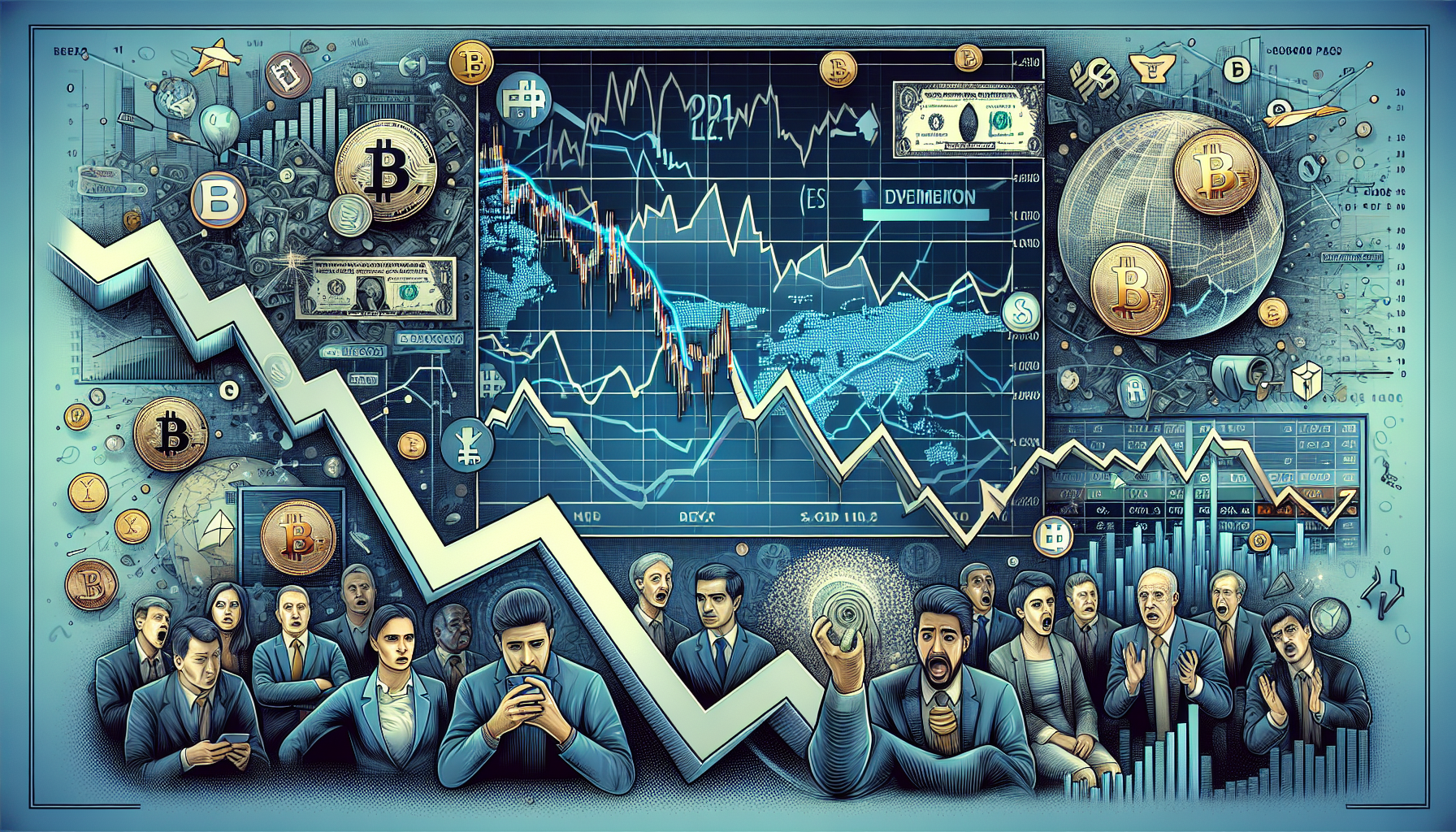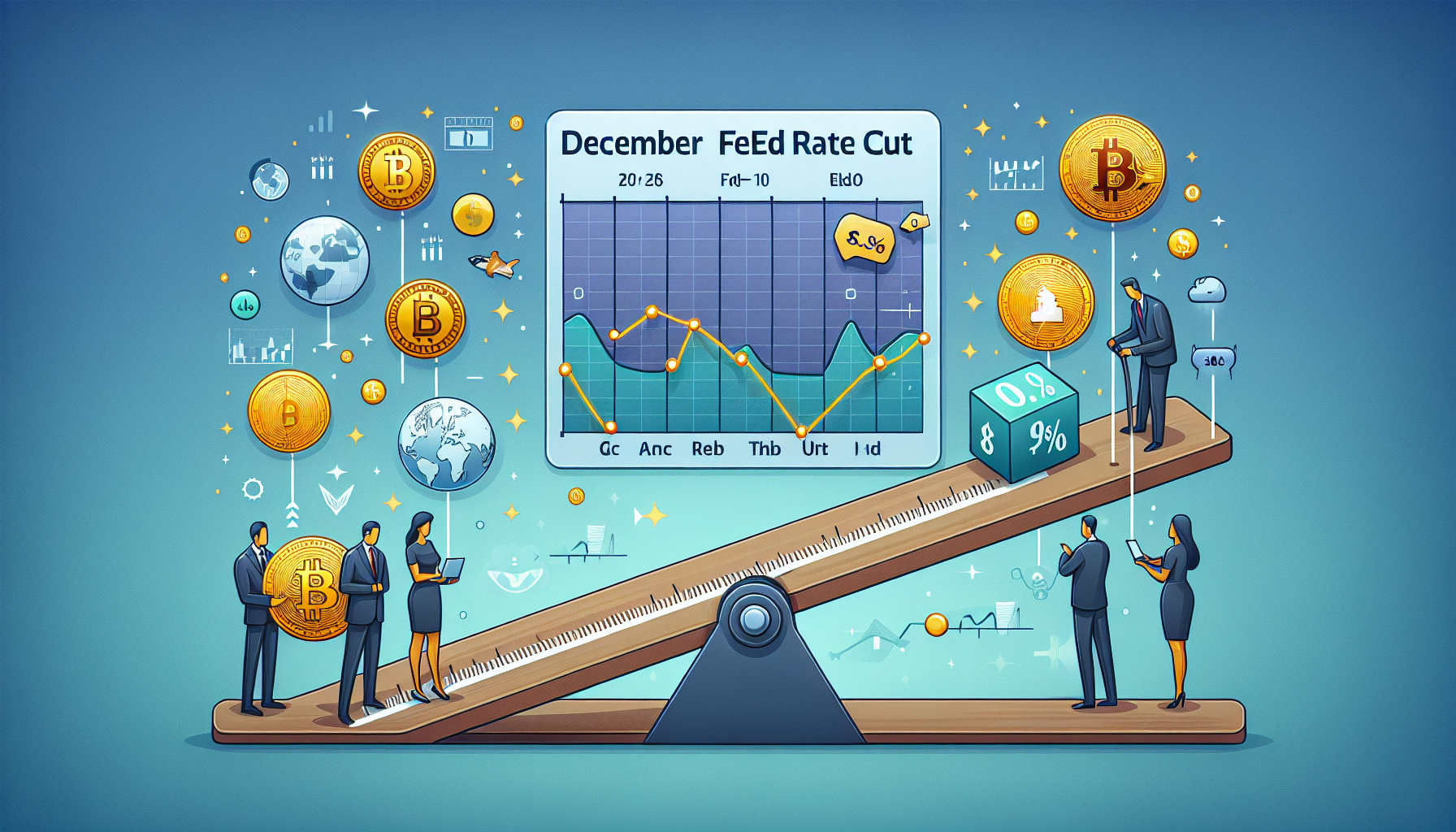The Federal Reserve's December Gamble: A 50/50 Chance That's Rattling Global Markets
The financial world is holding its breath. What was once considered a near-certainty just weeks ago has now devolved into a high-stakes coin toss. According to the CME Group's FedWatch tool, the probability of a Federal Reserve interest rate cut in December has plummeted to approximately 52%. This dramatic shift from a 95% likelihood a month ago signals a profound and growing uncertainty among investors and traders worldwide. The implications of this hesitation extend far beyond traditional stock and bond markets, casting a long shadow over the burgeoning digital asset ecosystem, where Bitcoin's struggle to maintain momentum above $103,000 reflects the broader market's anxiety.
Decoding the FedWatch Tool: The Market's Crystal Ball
To understand the current climate, one must first understand the FedWatch tool. It is not a official forecast from the Federal Reserve but rather a powerful indicator derived from the prices of 30-Day Fed Fund futures. In essence, it aggregates the collective wisdom and expectations of thousands of market participants, translating their trades into a probabilistic forecast of upcoming Federal Open Market Committee (FOMC) decisions. When the probability swings from 95% to 52%, it's a clear signal that the market's consensus is breaking down. This tool has become an indispensable resource for everyone from hedge fund managers to crypto traders, providing a real-time barometer of monetary policy expectations.
The Data Dance: Why the Fed is Hitting the Brakes
The Fed's primary mandate is to foster maximum employment and stable prices. After an aggressive hiking cycle to combat multi-decade high inflation, the central bank is now in a delicate "data-dependent" phase. The recent cooling in the probability of a December rate cut can be attributed to a mixed bag of economic indicators. While inflation has retreated from its peaks, certain core metrics remain stubbornly above the Fed's 2% target. Simultaneously, the labor market continues to show remarkable resilience, with low unemployment and steady wage growth. For the Fed, a strong job market reduces the urgency for immediate stimulus, allowing them to wait for more definitive signs that inflation is thoroughly defeated before easing policy.

Inflation's Stubborn Grip
Despite significant progress, the last mile of the inflation fight is often the most difficult. Recent Consumer Price Index (CPI) and Producer Price Index (PPI) reports have shown that while headline inflation is down, underlying price pressures in services and housing are proving persistent. The Fed cannot afford to declare victory prematurely and risk a re-acceleration of prices, a mistake made in the 1970s.
A Surprisingly Robust Labor Market
The U.S. economy continues to add jobs at a healthy pace, and unemployment remains near historic lows. This strength is a double-edged sword. It prevents a recession but also gives consumers continued spending power, which can feed into inflationary pressures. The Fed may view this resilience as a reason to hold rates at their current restrictive level for longer to ensure inflation is fully anchored.
The Ripple Effect: How Monetary Policy Dictates Market Sentiment
Interest rates are the fundamental pricing mechanism for all risk assets. When the Fed raises rates, money becomes more "expensive," encouraging saving over investing and tightening financial conditions. Conversely, rate cuts are seen as a stimulative measure, making borrowing cheaper and encouraging investment in higher-risk, higher-reward assets like technology stocks and cryptocurrencies.
The current "higher for longer" interest rate narrative directly impacts the market in two key ways:

- Risk Appetite: High interest rates on safe assets like U.S. Treasurys provide a compelling alternative to volatile investments. Why take a risk on a speculative altcoin when you can earn a guaranteed 5%+ in a government bond? This dynamic siphons capital away from risk-on markets.
- Valuation Models: The value of any future cash-flow-generating asset is calculated by discounting those future cash flows back to the present. A higher interest rate means a higher discount rate, which directly lowers the present value of those future earnings. This disproportionately affects growth-oriented tech stocks and, by extension, the crypto sector, which is valued heavily on future potential.
Crypto's Correlation Conundrum: Bitcoin at a Crossroads
For years, proponents of Bitcoin and other digital assets argued they were uncorrelated "safe havens" akin to digital gold. However, the post-2020 era has painted a different picture. Cryptocurrencies have increasingly traded in correlation with tech-heavy indices like the Nasdaq. The current market environment is a perfect test of this relationship.
As of the latest data, Bitcoin is trading near $103,000, showing little daily movement but struggling to break out to new highs. This consolidation occurs as market sentiment, as measured by popular sentiment indices, remains firmly in "fear" territory. The dwindling probability of a Fed cut is acting as a cap on crypto gains. Without the tailwind of easier monetary policy, the market lacks a fundamental catalyst for a significant upward move. The sharp pullbacks in altcoins like AERO, STRK, and FET further underscore the risk-off mood permeating the digital asset space.
The Stablecoin Surge and Infrastructure Build-Out
Interestingly, this period of uncertainty coincides with continued growth in the stablecoin sector, with payment volumes reaching $19.4 billion year-to-date in 2025. Companies like OwlTing are racing to build the payment infrastructure of the future, promising transactions that settle in seconds for a fraction of a cent. This highlights a maturing industry that is building through the cycle, preparing for a future where digital dollars are seamlessly integrated into global finance, regardless of the Fed's immediate decisions.
Beyond December: The Long-Term Trajectory for Interest Rates
While the December meeting is the immediate focus, the broader question is the direction of the entire rate cycle. Is the Fed pausing before a series of cuts in 2025, or is the economy normalizing at a higher interest rate level than the near-zero environment of the past decade? The answer to this question will have a more profound impact on asset prices than any single meeting.
Market participants are also closely watching the Fed's balance sheet runoff (Quantitative Tightening) and any subtle changes in the language Fed Chair Jerome Powell uses in his post-meeting press conferences. Every word is parsed for clues about the committee's tolerance for economic slowing and its commitment to its inflation target.
Conclusion: Market Implications for the Coming Weeks
The next several weeks leading up to the December FOMC meeting will be characterized by heightened volatility and sensitivity to incoming economic data. Every inflation report, jobs number, and retail sales figure will be magnified, causing sharp swings in both traditional and crypto markets. For traders, this environment demands a cautious and nimble approach.
For the broader market, the 52% probability is a warning that the era of predictable, dovish policy is over. The Fed is firmly back in the driver's seat, and its data-dependent stance means markets must re-learn to price in genuine uncertainty. If the probability continues to fall and a December cut is taken off the table, we can expect continued pressure on growth stocks and a challenging environment for cryptocurrencies to make significant bullish breakthroughs. A consolidation or even a corrective phase for Bitcoin and major altcoins is a distinct possibility without a fresh catalyst. Conversely, if new data surprises to the downside, reviving cut hopes, we could see a powerful relief rally across all risk assets. In essence, the market's fate for the remainder of the year now hangs on the evolving narrative from the Marriner S. Eccles Building.

